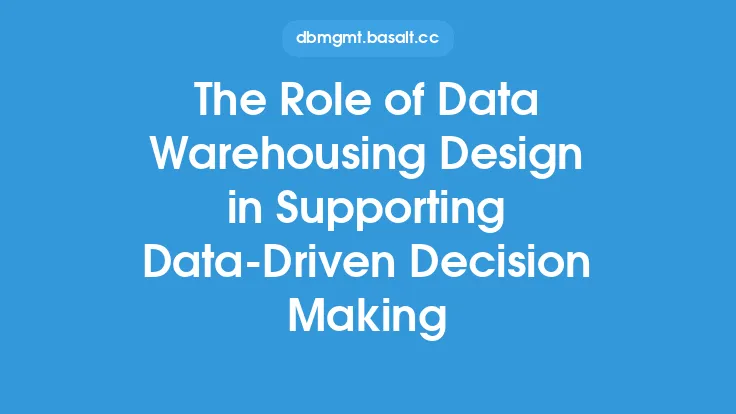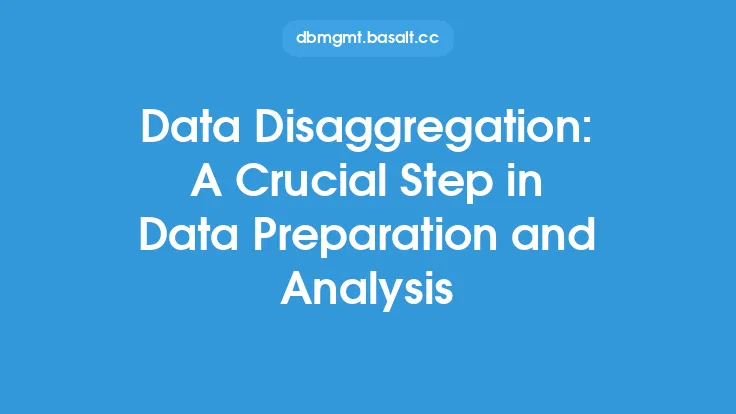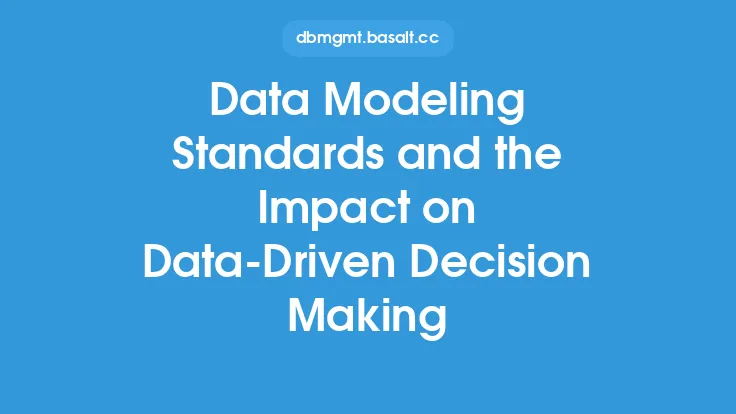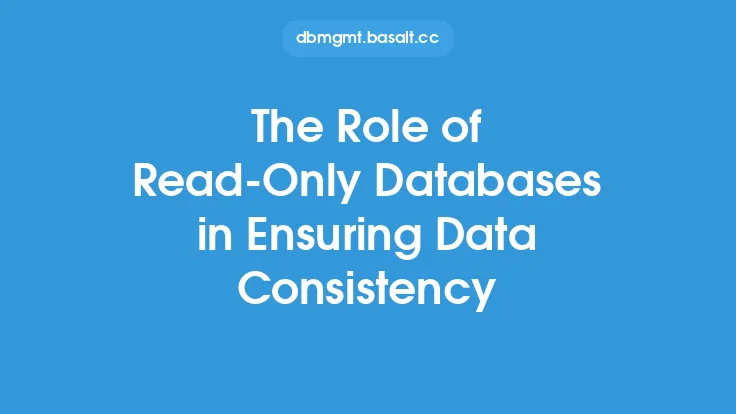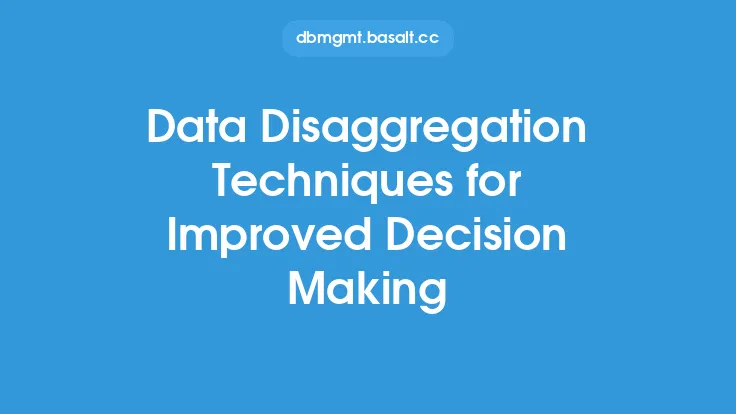In today's data-driven world, organizations rely heavily on data to inform their decisions, drive business growth, and stay competitive. However, the sheer volume and complexity of data can often mask underlying trends and insights, making it challenging for organizations to extract meaningful information. This is where data disaggregation comes into play, a crucial process that involves breaking down data into smaller, more granular components to reveal hidden patterns and relationships. By doing so, organizations can unlock new insights, identify areas for improvement, and make more informed decisions.
Introduction to Data Disaggregation
Data disaggregation is a fundamental concept in data analysis that involves decomposing data into its constituent parts to facilitate a deeper understanding of the underlying trends and relationships. This process is essential in data-driven organizations, as it enables analysts to move beyond aggregate-level data and explore the nuances of the data at a more detailed level. By breaking down data into smaller components, organizations can identify areas of strength and weakness, detect anomalies, and develop targeted strategies to drive business growth.
Benefits of Data Disaggregation
The benefits of data disaggregation are numerous and far-reaching. By breaking down data into smaller components, organizations can gain a more nuanced understanding of their customers, products, and services. This, in turn, can lead to improved decision-making, as organizations can develop targeted strategies that address specific needs and pain points. Additionally, data disaggregation can help organizations identify areas of inefficiency and waste, enabling them to optimize their operations and improve overall performance. Furthermore, data disaggregation can facilitate the identification of new business opportunities, as organizations can uncover hidden patterns and relationships that may not be apparent at the aggregate level.
Types of Data Disaggregation
There are several types of data disaggregation, each with its own unique characteristics and applications. One common approach is to disaggregate data by demographic characteristics, such as age, gender, or location. This can help organizations understand how different customer segments behave and respond to different products and services. Another approach is to disaggregate data by product or service category, enabling organizations to analyze sales trends and customer preferences at a more detailed level. Additionally, data can be disaggregated by time, enabling organizations to analyze trends and patterns over time.
Challenges and Limitations of Data Disaggregation
While data disaggregation offers numerous benefits, it also presents several challenges and limitations. One of the primary challenges is the sheer volume and complexity of data, which can make it difficult to disaggregate and analyze. Additionally, data disaggregation requires significant computational resources and advanced analytical capabilities, which can be a barrier for smaller organizations or those with limited resources. Furthermore, data disaggregation can also raise concerns about data privacy and security, as organizations must ensure that they are handling sensitive data in a responsible and ethical manner.
Best Practices for Data Disaggregation
To overcome the challenges and limitations of data disaggregation, organizations should follow best practices that ensure the integrity and accuracy of the data. One key best practice is to ensure that the data is of high quality and is properly cleaned and formatted before disaggregation. Additionally, organizations should use advanced analytical tools and techniques, such as machine learning and data visualization, to facilitate the disaggregation and analysis of the data. Furthermore, organizations should establish clear guidelines and protocols for data handling and storage, to ensure that sensitive data is protected and secure.
Real-World Applications of Data Disaggregation
Data disaggregation has numerous real-world applications across various industries and sectors. In healthcare, for example, data disaggregation can help organizations understand patient outcomes and treatment efficacy at a more detailed level. In finance, data disaggregation can help organizations analyze customer behavior and preferences, enabling them to develop targeted marketing campaigns and improve customer engagement. In retail, data disaggregation can help organizations analyze sales trends and customer preferences, enabling them to optimize their product offerings and improve customer satisfaction.
Conclusion
In conclusion, data disaggregation is a critical process that enables organizations to unlock hidden insights and make more informed decisions. By breaking down data into smaller, more granular components, organizations can gain a deeper understanding of their customers, products, and services, and develop targeted strategies to drive business growth. While data disaggregation presents several challenges and limitations, following best practices and using advanced analytical tools and techniques can help organizations overcome these challenges and unlock the full potential of their data. As data continues to play an increasingly important role in business decision-making, the importance of data disaggregation will only continue to grow, making it an essential skill for organizations seeking to stay competitive in today's data-driven world.
